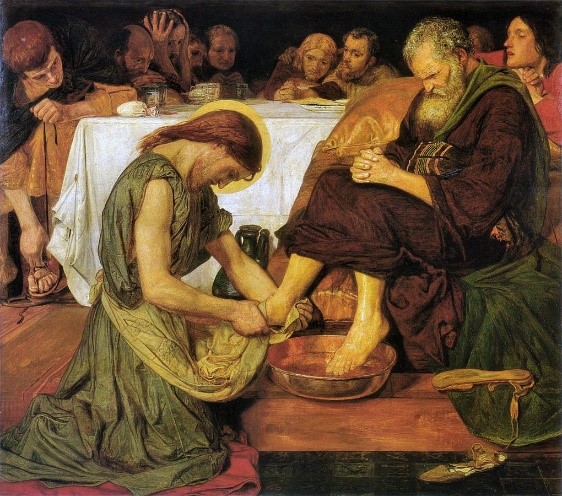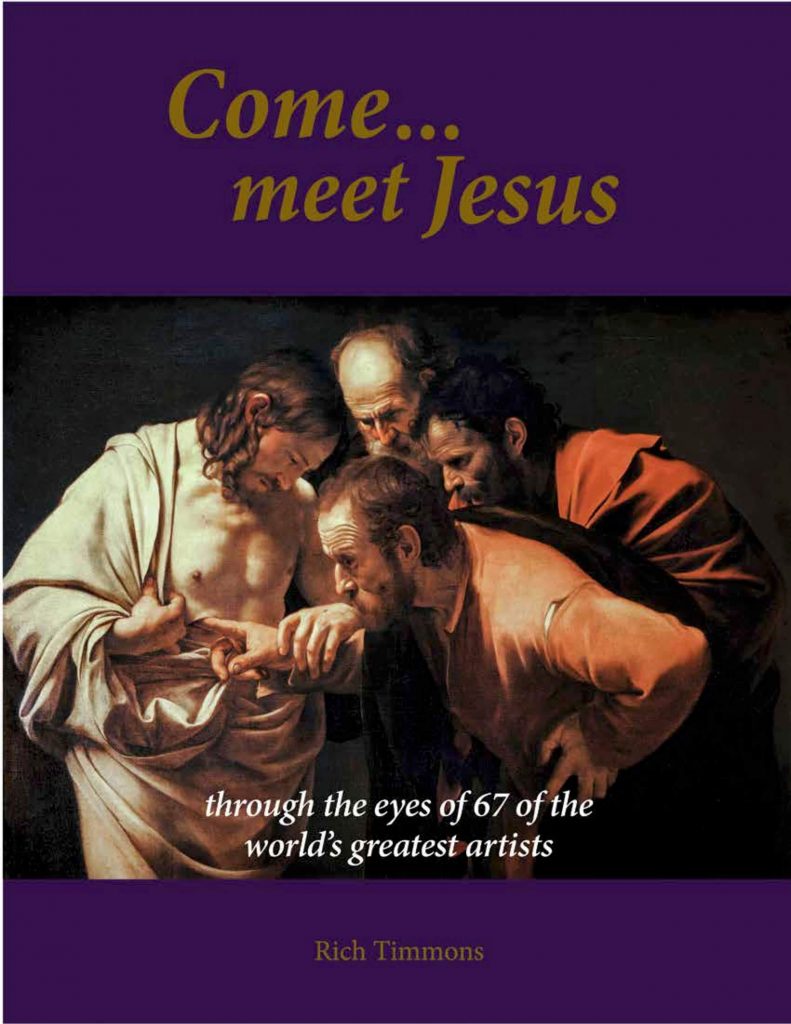Now before the feast of the Passover, Jesus, knowing that his time had come that he would depart from this world to the Father, having loved his own who were in the world, he loved them to the end. During supper, the devil having already put into the heart of Judas Iscariot, Simon’s son, to betray him, Jesus, knowing that the Father had given all things into his hands, and that he came from God, and was going to God,arose from supper, and laid aside his outer garments. He took a towel and wrapped a towel around his waist.Then he poured water into the basin, and began to wash the disciples’ feet and to wipe them with the towel that was wrapped around him.Then he came to Simon Peter. He said to him, “Lord, do you wash my feet?” Jesus answered him, “You don’t know what I am doing now, but you will understand later.” Peter said to him, “You will never wash my feet!” Jesus answered him, “If I don’t wash you, you have no part with me.” Simon Peter said to him, “Lord, not my feet only, but also my hands and my head!” Jesus said to him, “Someone who has bathed only needs to have his feet washed, but is completely clean. You are clean, but not all of you.” For he knew him who would betray him, therefore he said, “You are not all clean.” Matthew 13:1-10
The Messiah, the One who was supposed to usher in a new kingdom and restore Israel and defeat God’s enemies, is washing the feet of His followers. The Jesus that they threw away their old lives to follow, that they saw walk on water, cast out demons, heal lepers, multiply food to feed thousands, was now washing their feet. This painting captures their confusion and even horror as they see what He is doing! Jesus is so calm, composed, and absorbed in His task. There is such a sense of stillness about Him, a similar type of stillness found in figures in late Medieval art; perhaps it is the medieval halo the artist employs, or the framing device of the pure white tablecloth behind Him, or the flattening of perspective as the floor feels almost like it is flipping upward due to the low viewpoint. Maybe it is the sharp contrast and studied folds in His garment, or the subtle use of outlining, or just the quality of a painting when an artist works on an area slowly and thoughtfully for a long period of time.
Ford Maddox Brown as an associate of the Pre-Raphaelite Brotherhood was greatly influenced by their neo-medieval aesthetic, which is evident here. Peter is also painted with great care in his drapery and the wet dripping skin of his dangling feet. His posture and expression are so intriguing. At first, he seems almost to be scowling or pouting, resistant to his Lord doing such a yucky, menial task for him. But as you gaze at his face, there is a softness there around his eyes, and his clasped hands that at first looked like resistance begin to look like prayer. He really doesn’t understand what is happening, but he is trying to, and he is obeying his Lord, whether he understands or not.
The other disciples are just losing it in the background. Some are more extroverted in their expressions of confusion, like the disciple with his hands on his head or the disciple actually biting his hand. Some are processing this strange scene more internally, like the disciple in red directly behind Peter, who is perhaps John himself. The disciples are in pairs or groups as well, as if they are whispering to each other “what?!” We know the story, we know that this is ‘the Last Supper’, we know the crucifixion, resurrection, and ascension are coming. But these men don’t know that. And Jesus meets them in their limitedness, is ok with that, and completes this humble act of love even though He knew they were all confused and resistant, and that it would take time, experience, and the Holy Spirit for the truth and beauty of His actions to filter through into their hearts and sort out their wrong or incomplete assumptions about who God is or what Jesus came to do or how we are to treat each other. In one act, Christ says so much.
He also knew something else that they did not, as John tells us: He knew who would betray him. Judas is pictured on the left, identified by the money bag on the table before him. He is bent over, taking off his own sandals. Jesus will wash his feet too. What was Judas thinking, as Jesus washed his feet? How long did it take? Was he overcome with shame, or was he filled with annoyance and even more resolve that this was not the Messiah he wanted? And what was Jesus thinking, as he lovingly cleaned the dirt and stink off of the feet of the man who would send him to his death? This gives us a lot to consider ourselves.
Like, follow & share!
Shop coffee table books at www.comemeetjesus.art


